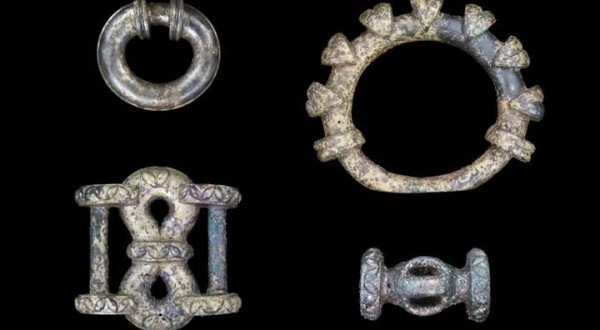Archaeologists believe they have found the bronze remains of a sacrifice made over 2,000 years ago. They unearthed an Iron Age chariot, which was burned and buried most likely as a religious offering.
“This is a matching set of highly-decorated bronze fittings from an Iron Age chariot – probably from the 2nd or 3rd century BC,” Dr. Jeremy Taylor, a landscape archaeology professor at the school, told the Leicester Mercury. “This is the most remarkable discovery of material we made at Burrough Hill in the five years we worked on the site.
“This is a very rare discovery, and a strong sign of the prestige of the site.
“The atmosphere at the dig on the day was a mix of ‘tremendously excited’ and ‘slightly shell-shocked.’
“I have been excavating for 25 years and I have never found one of these pieces – let alone a whole set. It is a once-in-a-career discovery.”
After the bronze fittings were burnt, whoever buried them laid a layer of cinder and slag over it, but the burial may have also been meant to mark a new season. The scientists also said the remains went untouched for the 2,200+ years between burial and discovery.
“The function of the iron tools is a bit of a mystery, but given the equestrian nature of the hoard, it is possible that they were associated with horse grooming,” project co-director John Thomas said in a press release. “One piece in particular has characteristics of a modern curry comb, while two curved blades may have been used to maintain horses hooves or manufacture harness parts.”
Agencies/Canadajournal
 Canada Journal – News of the World Articles and videos to bring you the biggest Canadian news stories from across the country every day
Canada Journal – News of the World Articles and videos to bring you the biggest Canadian news stories from across the country every day



